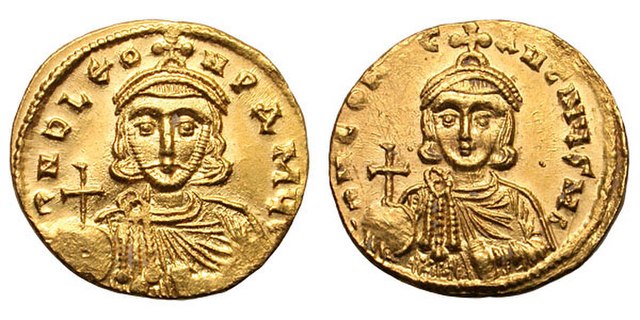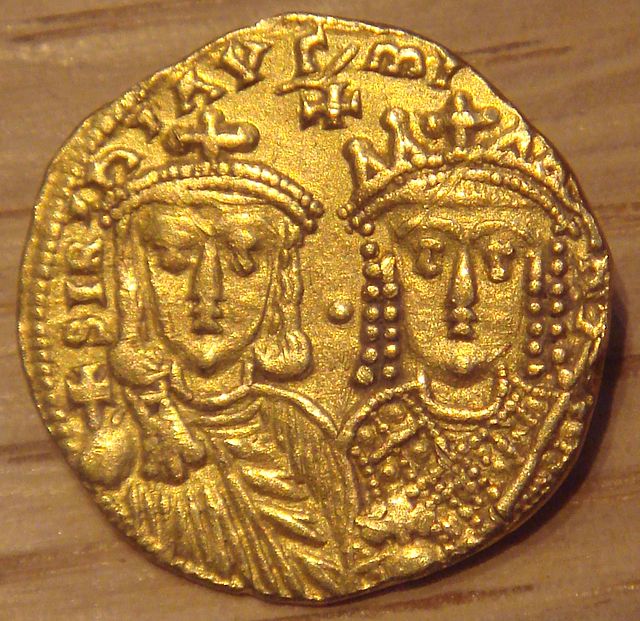Leo III the Isaurian, also known as the Syrian, was Byzantine Emperor from 717 until his death in 741 and founder of the Isaurian dynasty. He put an end to the Twenty Years' Anarchy, a period of great instability in the Byzantine Empire between 695 and 717, along with bringing an end to the continual defeats and territorial losses the Byzantines had suffered during the seventh century, marked by the rapid succession of several emperors to the throne. He also successfully defended the Empire against the invading Umayyads and forbade the veneration of icons.
Example of the miliaresion silver coins, first struck by Leo III to commemorate the coronation of his son, Constantine V in 720.
Byzantine Empire under the Isaurian dynasty
The Byzantine Empire was ruled by the Isaurian dynasty from 717 to 802. The Isaurian emperors were successful in defending and consolidating the empire against the caliphates after the onslaught of the early Muslim conquests, but were less successful in Europe, where they suffered setbacks against the Bulgars, had to give up the Exarchate of Ravenna, and lost influence over Italy and the papacy to the growing power of the Franks.
Gold solidus of Leo III showing his son and heir, Constantine V
Folio from the 9th century iconophile Chludov Psalter, likening the iconoclasts, shown painting over an image of Christ, with the soldiers who crucified him
Gold solidus showing Irene alongside her son Constantine VI




